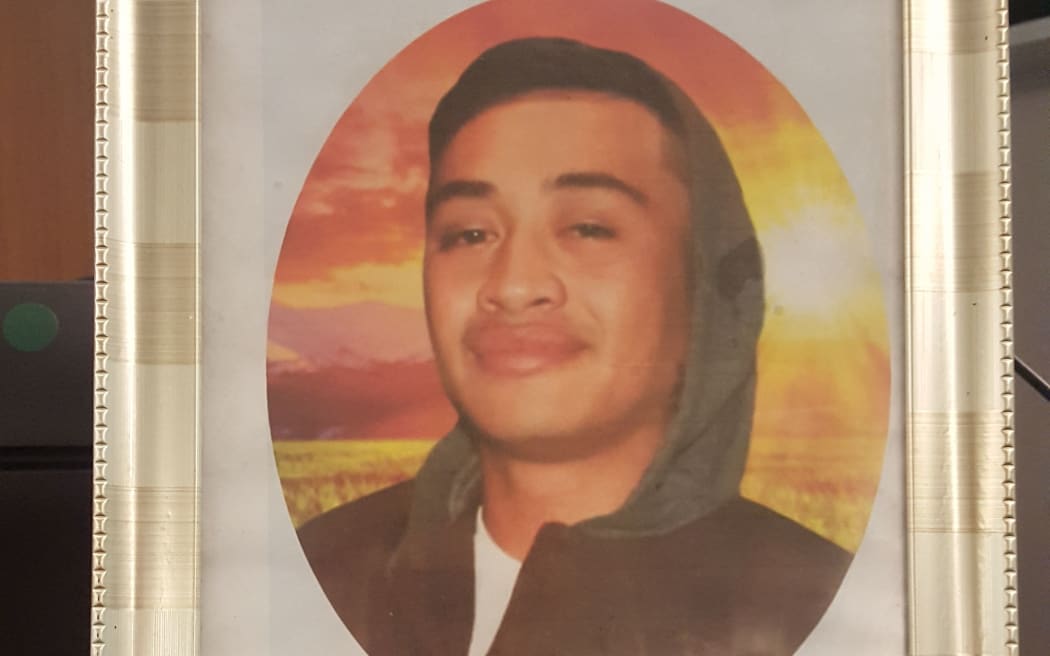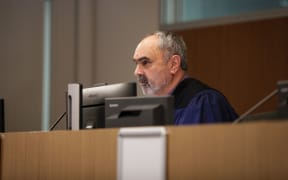Two families searching for answers as to what happened in a fatal car crash in Lower Hutt may have a preliminary result from the Coroner within two weeks.

A picture of Leyton-Leigh Alderson that was on display at the Coroner's Court. Photo: RNZ
An inquest into the death of Leyton-Leigh Alderson ended yesterday in the Wellington Coroner's Court, three years to the day since he died.
Mr Alderson was 22 when the car he was in crashed into a bridge in Wainuiomata.
Initially the police charged a passenger, Beau McMenamin, with drunk driving causing death, but that was thrown out after new evidence emerged.
Both the Alderson and McMenamin families have been in the Wellington Coroner's Court this week as the coroner's inquest delved into exactly who was driving in the crash.
Amy Spark, the pathologist who carried out a post-mortem on Leyton-Leigh Alderson's body, initially believed he had been in the car's front passenger seat when it crashed, as revealed in an evidential statement.
"I expressed the opinion that certain injuries to [Mr Alderson], particularly those involving the left side of the face, supported the view that [he] had been on the left side of the vehicle at the time of the incident."
The police then charged the other man in the car, Beau McMenamin.
On Wednesday, Mr McMenamin admitted he had driven Mr Alderson's car earlier on the night of the crash, but denied being behind the wheel when the crash happened.
He told the coroner he remembered the car going out of control, but he could not remember anything about the crash itself.
After he was charged, his family sought help from an independent pathologist, Martin Sage, and a specialist crash investigator, Tim Stevenson, and their findings led to the charge against him being thrown out.
Dr Sage told the coroner yesterday that none of the three people in the car suffered what are known as 'witness injuries' from which you could ascertain where they were sitting during the crash.
However, he said the person most severely injured in the crash was likely to have been the driver and the injuries suffered by Leyton-Leigh Alderson were consistent with that.
"So it's possible either Alderson or McMenamin may have been the driver, but given [Mr Alderson's] right side injuries I believe he is to be preferred as the driver over Mr McMenamin."
The independent crash investigator, Tim Stevenson, said the photos he saw showed the front part of the car had separated from the rest of it and the crash impact had also caused other parts of the car to significantly intrude into the driver's footwell.
"This has mostly missed the foot pedals of the driver, which have remained with the front part of the car after separation, but there is a significant intrusion with an associated extremely high risk of very severe lower limb injuries.
"The driver would be at severe risk of that because of that intrusion."
During her post mortem, Dr Spark found Mr Alderson had suffered serious injuries to his lower legs.
She told the inquest yesterday that after discussing the crash with Dr Sage, she changed her initial impression about who was driving.
"I ... was able to view the police report regarding the incident, and photography of the vehicle.
"With this information, and with a description of the injuries to the other occupants in the car, I am of the opinion that [Leyton-Leigh Alderson] was indeed most likely to have been the driver of the car," Dr Spark said.
The Alderson family had also consulted their own independent pathologist, Joanna Glengarry.
In cross-examination she told the McMenamin family's lawyer, Matt Anderson, she believed it was Leyton-Leigh Alderson at the wheel, leading to this exchange:
- Q: "You say in your report the severity of injuries on Leyton-Leigh Anderson suggests positioning in the driver's seat, but [you] can't be definite about that. In your view is that more likely?
- A: "In my conclusion I have said I would favour that Mr Alderson was the driver of the car."
- Q: "Is it more likely [given his injuries] that Mr McMenamin was on the left side?"
- A: "I don't think I can say more likely. I have said it is possible. Now where, linguistically, 'possible' and 'more likely' meet I will leave at the discretion of Coroner Scott. I would say it's possible he was on the left side."
The inquest ended with a karakia from Mr Alderson's family.


